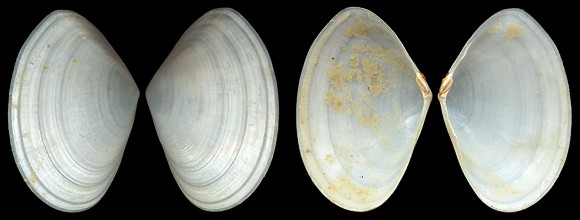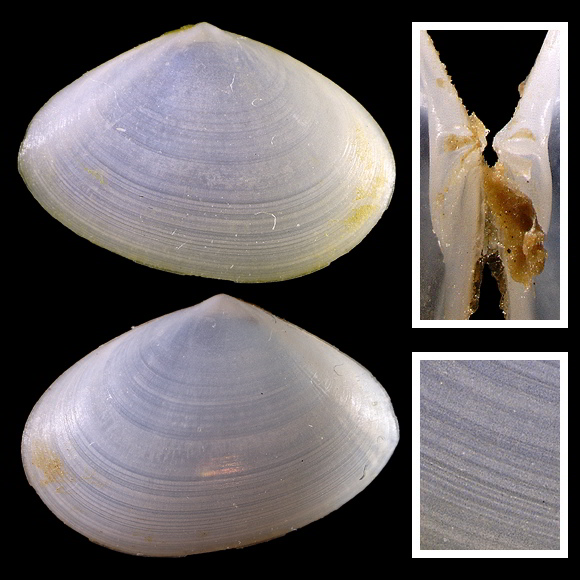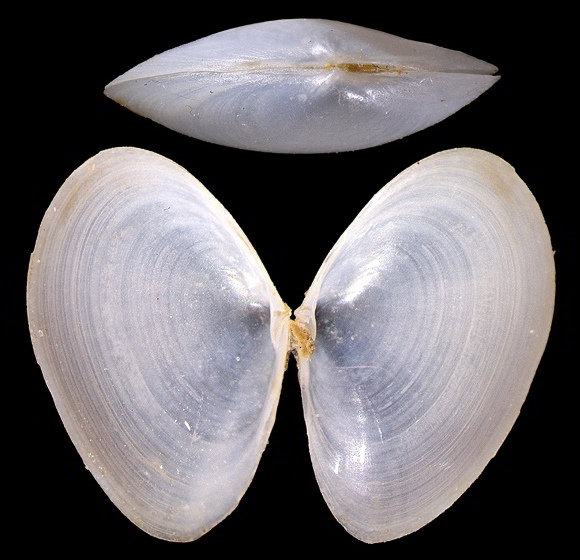
Original taxon: Tellina longicallus. Lives on the continental margins and upper bathyal slopes, between 200 and 1000m.
Synonyms: americana, longicallis, profundissima, tellinella. Some weak radial striae are visible on the surface, which allow to differentiate this species from the others in the genus.
Instead of feeding on surface sediments, A. longicallus is able to take its food from subsurface layers. More: where the other Abras used to ejecting their faecal pellets « on the bottom surface, A. longicallus voids them in cavities below the surface » (Wikander, 1980). Depositing these pellets at feeding level « was interpreted as gardening activity » (Allen, 1983). If this were true, such a behaviour on behalf of an animal that lives in an environment low in energizing income would obviously represent a definite adaptative advantage.
Instead of feeding on surface sediments, A. longicallus is able to take its food from subsurface layers. More: where the other Abras used to ejecting their faecal pellets « on the bottom surface, A. longicallus voids them in cavities below the surface » (Wikander, 1980). Depositing these pellets at feeding level « was interpreted as gardening activity » (Allen, 1983). If this were true, such a behaviour on behalf of an animal that lives in an environment low in energizing income would obviously represent a definite adaptative advantage.
250m deep, on mud, off Siracusa, SE. Sicily. 20mm.

